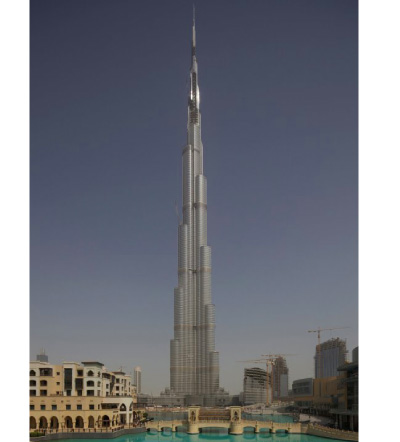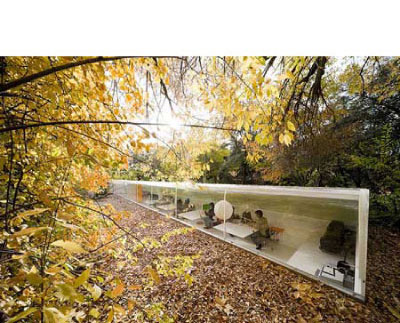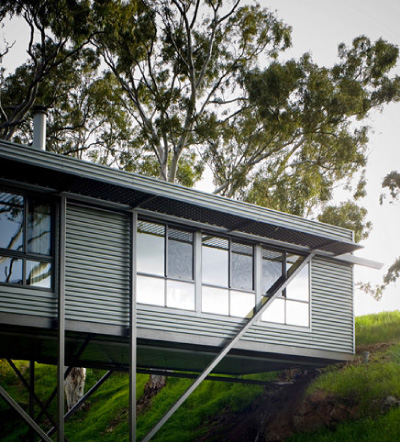
Photography by Sam Noonan

The Bridge House by architect Max Pritchard got a fair amount of press earlier this summer, so we’re a little late to the praise party. But in the interest of giving credit where credit is due, we’d like to gush over this ingenious living/working space that straddles a creek outside of Adelaide, South Australia. Let’s start with money. It only cost $177,000. That’s laughably lower than the average home being published today. Granted, with an area of 110 square meters, Bridge House is relatively small. But a price tag under $200k for such a thoughtfully designed home on a lot this challenging is inspiring: Hey, average non-millionaire, you too could have your house written about in fancy New York City magazines if you hire a clever architect like Mr. Pritchard. Oh, and if you’re ballsy enough to build over a creek’s deep waterhole.
In Australia, they’d call that waterhole a billabong. The clients have a 10-acre site but they wanted their house to be on the bank overlooking the billabong. They didn’t want to significantly alter the gorgeous setting and destroy the billabong, so steel trusses were used to elevate the house. As a commenter on the Web site Archinet reminds us, it’s very reminiscent of an unbuilt project by Craig Ellwood, the influential, yet unlicensed, architect. The best artists always steal, right?
(more…)
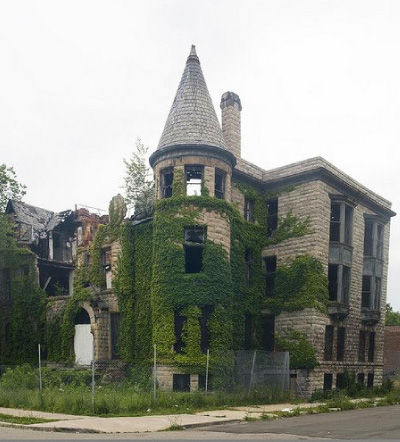

Perhaps you grew up in a tree-lined, middle-class suburb outside of Cleveland, tiptoeing past a dilapidated Gothic Revival on the way to the bus stop. Perhaps you came of age near New York’s BQE, eyeing weathered, unoccupied row houses with suspicion. Wherever you were, there was a good chance that an abandoned, spooky old house — its lawn gone to seed, its windows boarded — waited for you around the corner or at the end of the lane. Maybe you had the nerve to sneak in or perhaps you just watched sentimentally as the elements turned its walls and wood into something more fascinating and feral. Now imagine that house not being the exception in your ‘hood, but a growing norm.
In cities across the country, the diving housing market and industrial downturn have had families on the run and leaving properties behind. In Flint, Michigan, Oakland, California, and even Brooklyn, rows of houses that have remained vacant since the mid-90s have welcomed new occupants – ivy, trees, and ruin. As GM and the other manufacturing giants slashed workforces over the last 20 years, the communities around these industrial centers have become eerie memento mori to bygone times when work was plenty, mortgages were cheap, and blue-collar communities thrived. Now the thriving in areas of Detroit and other cities is done by nature.
(more…)

Ah, Dubai. The crazy little emirate known for palm-tree-shaped islands and exploiting South Asian laborers now has another feather in its cap: the tallest building in the world. The Burj Dubai, which is rumored to open December 2, is already taller than Taiwan’s Taipei 101, now the second-tallest building in the world. Designed by Adrian Smith and the skyscraper-efficiency gurus at Skidmore, Owings and Merrill, the Burj Dubai could be as tall as 2,600 feet once finished. While its developer, Emaar Properties, won’t divulge the Burj’s official height or completion date, they have been generous with obnoxious promotional copy: “Burj Dubai will be known by many names. But only a privileged group of people will call it home.” Also on the project’s website is a bewildering image gallery with more borderline artistic photographs than pictures of the actual building.
I don’t mind the tackiness. I just want a new tallest building.
(more…)
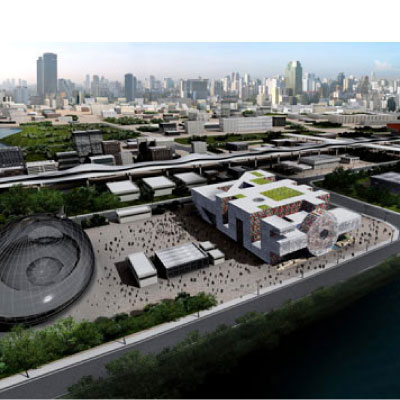
Detail of Korean Pavilion by Mass Studies

Decades ago, long before an architect could tweet his latest design to bloggers and PR people, world’s fairs were a big deal. The World’s Columbian Exposition, held in Chicago for six months in 1893, attracted 27 million people, about half the U.S. population at the time. Any kid living in or around New York City in 1939 or 1964 no doubt begged his parents for a ticket to the two world’s fairs in Queens. But ask someone today how psyched they are for Expo 2010 in Shanghai, and you’re bound to get a blank stare. While world’s fairs have long since lost their cachet, countries are still sponsoring praiseworthy pavilions. Here are the ones we think will make the biggest splash in Shanghai.
(more…)
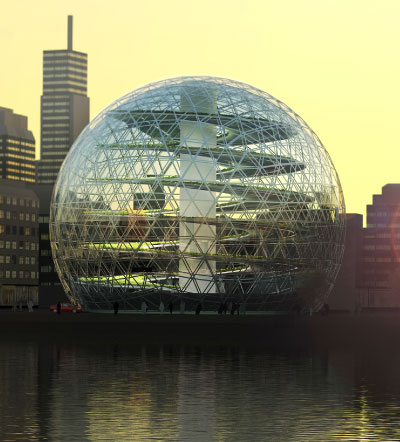

As we reported previously, a number of companies and consortiums are exploring the idea of urban, “vertical” farms – entire ecosystems of agricultural production contained in modern buildings right in the middle of the world’s busiest cities. Besides looking really cool, these agricultural factories have ingenious production cycles, capturing sunlight, rain, and wind as well as having floor-to-floor crop plans that increase efficiency and crop yield, and maximize resources.
Many argue, and certainly the companies behind these “farms” do, that the world’s increasing population needs new solutions for future agriculture. With 80 percent of the world’s arable land already in use, the idea is to build up instead of out — and keep the distribution of food local — an approach that has led a growing number of vertical farm projects to surface. The verdict is still out as to whether these projects are truly as viable and environmentally sound as they claim. Much research and analysis will still need to be done, especially by qualified third parties. But for now we marvel at the inventiveness of the various plans we see springing up.
(more…)

The most common response to the question “What’s your dream home?” is probably something like “A place in the woods, surrounded by nature.” That’s because many of us equate living deep in the forest or high in the mountains with serenity and, if the house is modernist (or better yet, a modernist take on a log cabin!), a sort of rustic sophistication. Think of Frank Lloyd Wright’s Fallingwater; hell, even that vampire family’s house in Twilight. But many of us spend as much or more time at work than we do at home. And many of us work in some of the world’s most demoralizing, low-ceilinged buildings in the busiest and smelliest areas of major cities. So, short of becoming a lumberjack, how should today’s cooped-up white-collar employee dream of escaping his or her miserable workspace? By getting a master’s degree in architecture and applying for a job at Selgascano, a Spanish design firm whose new studio is in the middle of the woods outside Madrid.
(more…)
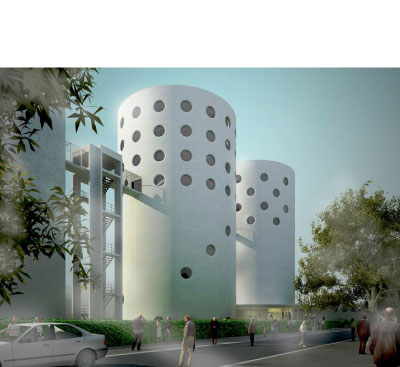

In between downtown Amsterdam and a newly developed area to the east called IJburg is the island of Zeeburgereiland. Locals mainly think of Zeeburgereiland (loosely translated: “sea person island”) as an inhabitable island with a massive sewage-treatment plant. But not for long. The plant is being relocated, and Zeeburgereiland is becoming prime real estate. Three large silos once used for treating sewage will remain on the island; one of them has already been converted into office space. The city council recently held a competition to determine how to reuse the other two and, in April, announced the winning design: Arons En Gelauff Architects’ Annie MG Schmidt House, a cultural center named after Holland’s most celebrated children’s book author. But if we were running things, it would have gone to NL Architects’ proposal. Why? Look at these pictures.
In their plan, one silo would be adapted into an indoor climbing center. Its walls taper toward the top and ingeniously end at a roof light. The firm envisioned the climbing silo also being used for weddings, birthday parties and church services.
(more…)
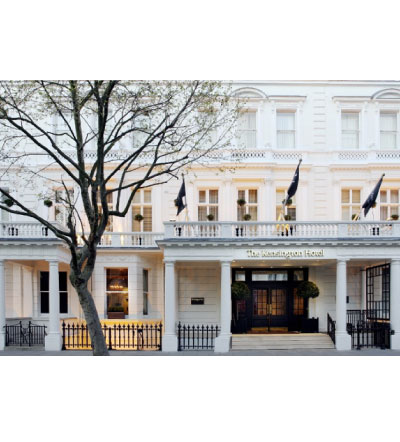

Last year New Yorkers bid adieu to Philippe Starck’s Royalton presence, the former enfant terrible’s glass sconces shaped like ram’s horns, glitzy champagne bar that evoked the inside of a genie bottle, and three-legged chairs. And with that, flash was eclipsed by comfort, fantasy replaced with substance. But while New York only just stopped and smelled the classic design flowers — having allowed Philippe Starck to single-handedly razzle and dazzle the city for nearly 20 years — the British and Irish have always been weary of modernism, newfangled ‘starchitects’, and pop-star designers, and generally agree on the value of timeless, well-designed spaces.
Case in point, my admiration and appreciation for this level of British (and Irish) design was only accentuated when on a recent visit to the newest refurb (as of April) of the Doyle Collection hotel group (formerly the Jurys Doyle Group) in London, The Kensington Hotel. Designed by Denis Looby from Dublin-based Sheehan & Barry Architects, its understated elegance — an eclectic mix of eastern antiques and vintage and repro Victorian furniture, vintage chandeliers and console tables, gorgeous Farrow & Ball wallpaper paints and Murano glass wall fittings — that makes you feel as if you’re a guest at a relative’s old Georgian home (i.e. a posh, long lost British uncle you just found).
(more…)
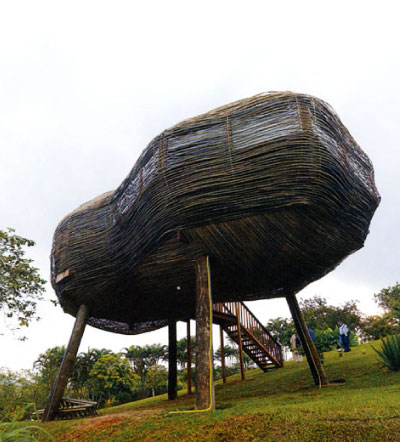

Interesting things are happening in the south of Senegal a few miles northwest of Dakar. Edouard François, the architect known for his innovative green establishments, is rebuilding the old Les Almadies Club Med creating a sustainable holidaymakers paradise.
The 250 rooms – made of clay, wheat and wood – are perhaps best described as wooden bird’s nests, or cocoons, as they rest above ground elevated by poles. The location of the resort is stunning with the North Atlantic Ocean on one side and a lagoon on the other. To provide the guests with a full view, each of the rooms have 360-degree windows.
“In our daily life we normally only have windows facing one way, maybe two, but never all the way round. A 360-degree view means that you are free”, he says.
François has become known as one of the entrepreneurs of green architecture and the new Club Med is no exception.
“With this place I want to do something that is very poetic and unusual and that also deals with ecology. We have a very high level of ecological ambition for the project and are aiming to become self-sufficient.”
(more…)
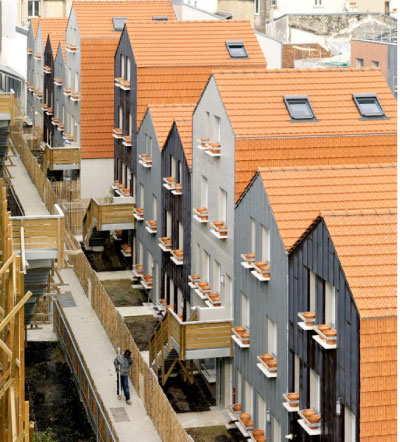
All Images © David Boureau

The recently unveiled Villas des Vignoles, in Paris, is the most charming public-housing complex in the world. Occupying one rectangular city block, the two- and three-story dwellings have many features most people don’t associate with the PJs: pitched roofs of varying heights, nooks designated for gardening and composting, vine-covered facades, and rabbit hutches. Yes, rabbit hutches. It’s also called Eden Bio, perhaps because when compared to most subsidized housing around the world, Vignoles is paradise. The rabbits here will likely live better than many people in the city’s less desirable housing projects — with apologies to those that end up as delicious lapin a la cocotte.
Vignoles is getting a good deal of press in part because the bar for public housing is so low. Paris, like all large cities, has its fair share of unfortunate housing projects, and its reputation took a beating after the riots in October and November 2005. While the unrest in the city’s Clichy-sous-Boi neighborhood was reportedly a result of the lack of jobs available for the young, predominately Muslim residents, as well as police brutality, urban planners and other critics also blamed the buildings these kids called home: colonies of tall, concrete slabs which failed to provide residents the slightest feeling of warmth or security. The housing projects had a de-humanizing effect on the immigrants who were placed there and, perhaps even more so, on their children who’d never lived anywhere else.
(more…)





 Facebook
Facebook Permalink
Permalink Digg
Digg Reddit
Reddit LinkedIn
LinkedIn StumbleUpon
StumbleUpon Tumblr
Tumblr

